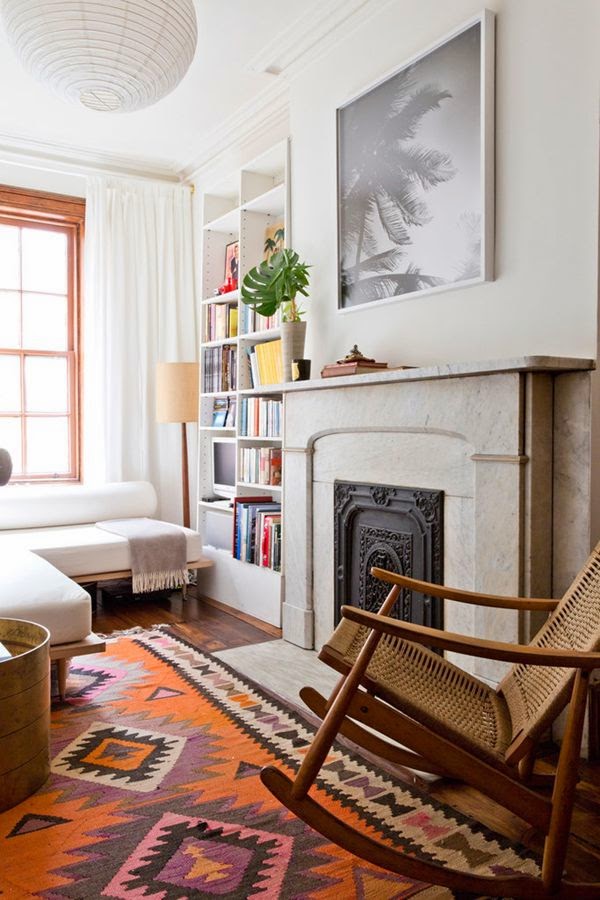And a quality oriental rug -- built to endure -- will not just help you save on the decorating you are doing now, but also on the redecorating you'll do once, twice maybe three times in the future.
Remember the oriental rug and you can forget about a lot of the other "stuff"
you thought you'd need to complete your room.
Bare necessities can cover it all; and it doesn't necessarily take a lot to accomplish much. This is especially so if an oriental rug is on your short list of must-have room furnishings.
Rugs with bold patterning (especially geometric styles) or with rich, multi-hued palettes are so natural at commanding their space that bringing much else into the picture is actually counterproductive in diluting their impact.
If the presence of a suitable oriental rug makes it possible for a room to declare that it is complete, additional spending to supplement the fait accompli is wasteful.
Even rugs that are simply patterned or that have subtle palettes make big impressions that fill their rooms and impart a sense of completeness that does not invite or require a lot of additional accessorizing.
With over fifty years of combined experience in the use of fine quality area rugs (especially real, hand-knotted oriental rugs) in interior design, the partners at Brandon Oriental Rugs (www.BrandonRugs.com) are well skilled at:
- helping you to spend less for the quality rugs you want; and to get better quality rugs for what you want to spend.
- helping you find outstanding rugs to establish, advance and complete your design projects with services that will save you time, effort, and cost.
- helping you solve the puzzle of your decorating challenges with just the right rug to make all of the other furniture pieces you've assembled fit together perfectly.

[Brandon Oriental Rugs serves the Greater Philadelphia metropolitan area including all surrounding counties in southeast Pennsylvania (Bucks, Montgomery, Chester, Delaware, Berks); the Lehigh Valley (including Allentown, Bethlehem, Easton); Central and South Jersey (including Haddonfield, Cherry Hill, Morrestown, Princeton, Hopewell, Pennington, Flemington, Frenchtown, Basking Ridge and Burlington County, Camden County, Gloucester County, and all of the Jersey Shore communities.]
[photos used here are repinned from Pinterest. Links to original sites can be found on Brandon Oriental Rugs Pinterest page "Designing With Rugs"]





















